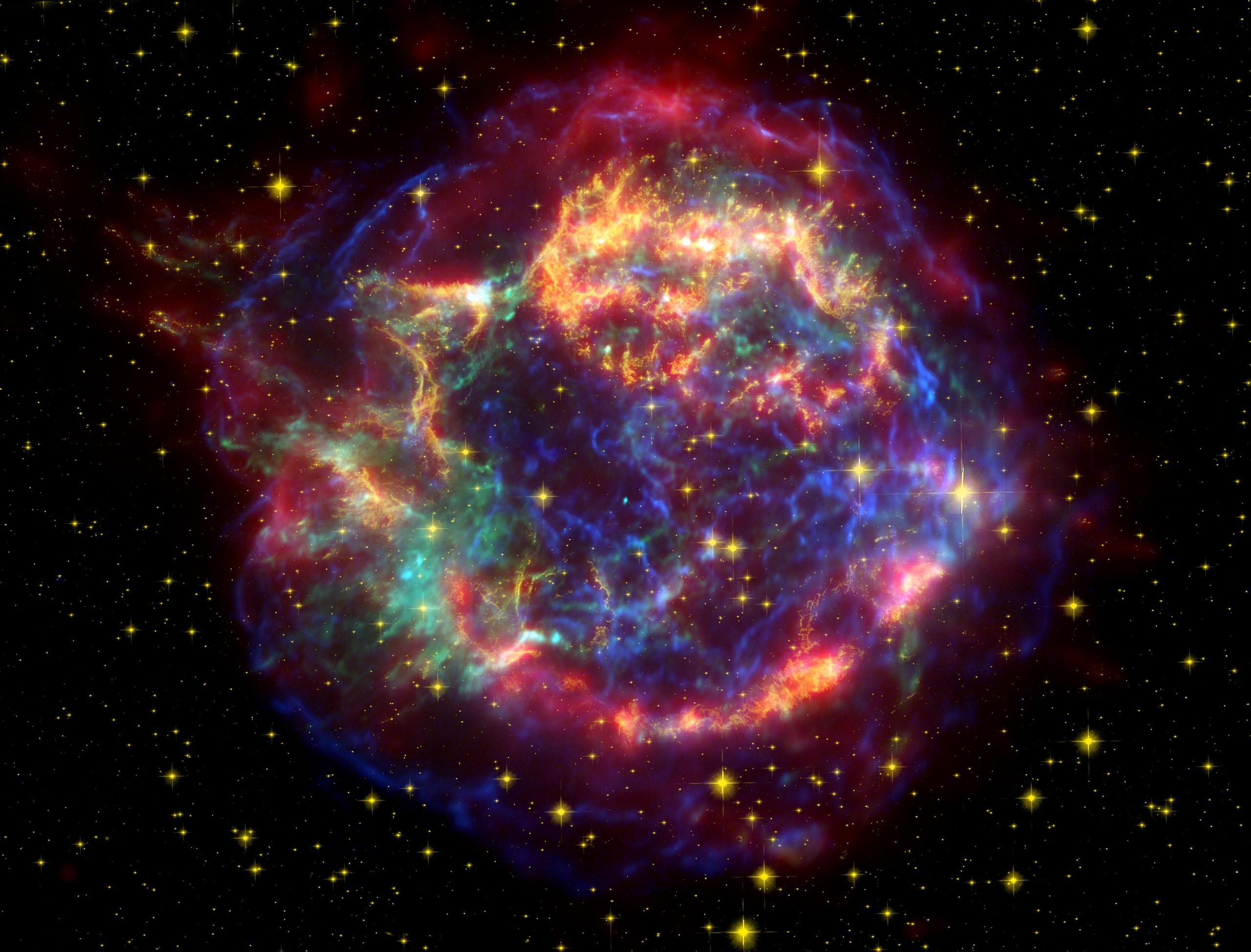 |
| Can you find the Big Dipper? How about a sideways 'W' on the opposite side of the North Star? Image: Stellarium and Me |
 |
| Cassiopeia is the sideways 'W' shape on the opposite side of the North Star as the Big Dipper. |
 |
| Cassiopeia as depicted in in Urania's Mirror, a set of constellation cards published in London c. 1825. Image Source |
In 1572, the astronomer Tycho Brahe glanced up on an evening walk and noticed a new star in the sky near Cassiopeia. At the time, it was widely believed that the heavens were perfect and unchanging, so this appearance of a new star was shocking. He was so intrigued by this apparition that he devoted his life to charting the stars and planets with precise measurements. We now know that what Tycho observed was a star going supernova. It's remnant, Cassiopeia A, is the strongest radio source outside of our Solar System.
 |
| A false color image of Cassiopeia A (Cas A) using observations from both the Hubble and Spitzer telescopes as well as the Chandra X-ray Observatory. Image Source |
| Don't miss Laser Light Night this Saturday night! |
No comments:
Post a Comment